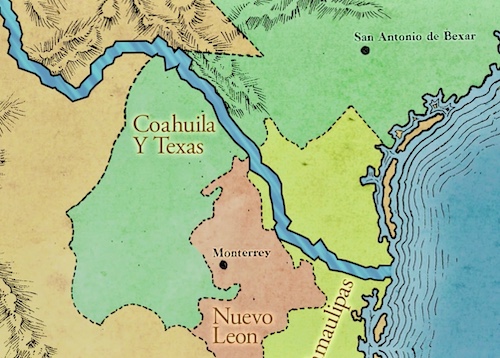The State of “Coahuila y Texas” Predates the State of Texas

This region was the state of Coahuila y Texas, part of the Mexican Republic that claimed Texas from 1821 to 1848. Through massive and often convulsive changes, food kept memories alive and communities whole. This is an excerpt from “Truly Texas Mexican: A Native Culinary Heritage in Recipes” published by Texas Tech University Press.

“The indigenous Texas natives, along with their food, came to be known as “Mexican,” but it is erroneous to locate this food history as ‘south of the border,’ for it existed also north of the Rio Grande long before it was a border. Movement back and forth from north to south of the river was continuous, seamless, not only for peaceful trade and exchange but also because of war raids and, in the 1800s, ethnic extermination policies (Anderson, 2005).
“Between 1492 and 1900, 90 percent of the native peoples of Texas died. European diseases such as cholera, smallpox, measles, and influenza devastated huge populations within weeks and even days (La Vere, 2004). The indigenous peoples who remained in Texas married into other tribes, with European settlers, and with Mexicans coming up from Southern Mexico. They sometimes lived in Catholic missions and eventually came to be known as the Mexican people of Texas. It was a process of continuous change and adaptation. Anthropologists call this ability to survive cultural and ethnic shifts and form new cohesive identities, “ethnogenesis” (Sperry, 2007).
“Food production and cooking were essential to Texas Indian survival and self-identity.
Sources:
Anderson, G.C. (2005). The Conquest of Texas: Ethnic Cleansing in the Promised Land, 1820-1875. Norman: University of Oklahoma Press.
La Vere, D. (2004). The Texas Indians. College Station: Texas A & M University Press.
Sperry, J.E. (2007). “Ethnogenesis of the Metis, Cree and Chippewa in Twentieth Century Montana.” Master’s thesis, University of Montana.
hi. yes, it is available for purchase only on the streaming services: amazon, youtube, googleplay, apple TV and others.
Is the documentary Truly Texas Mexican available to purchase other than download??